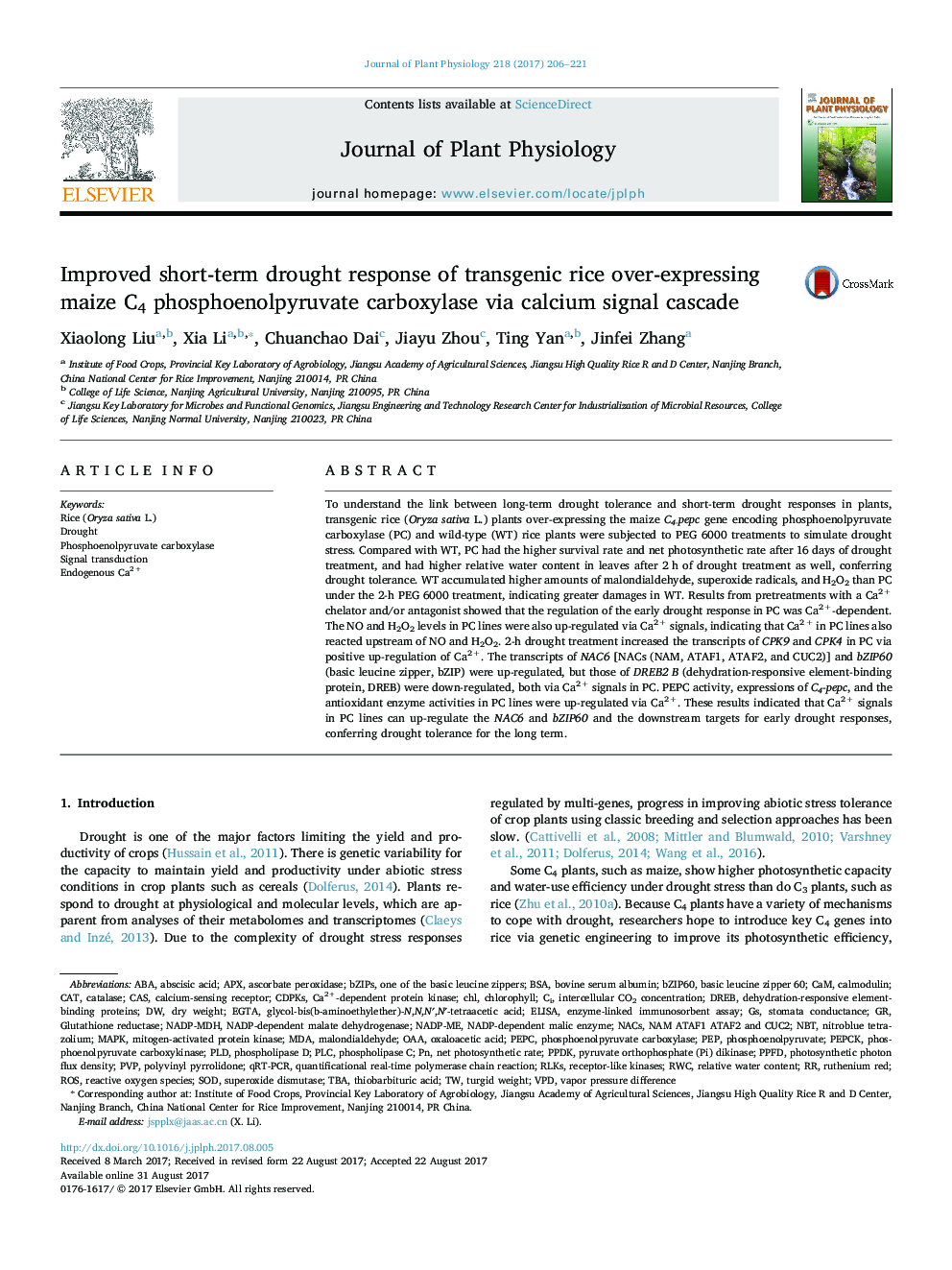| Article ID | Journal | Published Year | Pages | File Type |
|---|---|---|---|---|
| 5517987 | Journal of Plant Physiology | 2017 | 16 Pages |
To understand the link between long-term drought tolerance and short-term drought responses in plants, transgenic rice (Oryza sativa L.) plants over-expressing the maize C4-pepc gene encoding phosphoenolpyruvate carboxylase (PC) and wild-type (WT) rice plants were subjected to PEG 6000 treatments to simulate drought stress. Compared with WT, PC had the higher survival rate and net photosynthetic rate after 16Â days of drought treatment, and had higher relative water content in leaves after 2Â h of drought treatment as well, conferring drought tolerance. WT accumulated higher amounts of malondialdehyde, superoxide radicals, and H2O2 than PC under the 2-h PEG 6000 treatment, indicating greater damages in WT. Results from pretreatments with a Ca2+ chelator and/or antagonist showed that the regulation of the early drought response in PC was Ca2+-dependent. The NO and H2O2 levels in PC lines were also up-regulated via Ca2+ signals, indicating that Ca2+ in PC lines also reacted upstream of NO and H2O2. 2-h drought treatment increased the transcripts of CPK9 and CPK4 in PC via positive up-regulation of Ca2+. The transcripts of NAC6 [NACs (NAM, ATAF1, ATAF2, and CUC2)] and bZIP60 (basic leucine zipper, bZIP) were up-regulated, but those of DREB2Â B (dehydration-responsive element-binding protein, DREB) were down-regulated, both via Ca2+ signals in PC. PEPC activity, expressions of C4-pepc, and the antioxidant enzyme activities in PC lines were up-regulated via Ca2+. These results indicated that Ca2+ signals in PC lines can up-regulate the NAC6 and bZIP60 and the downstream targets for early drought responses, conferring drought tolerance for the long term.
